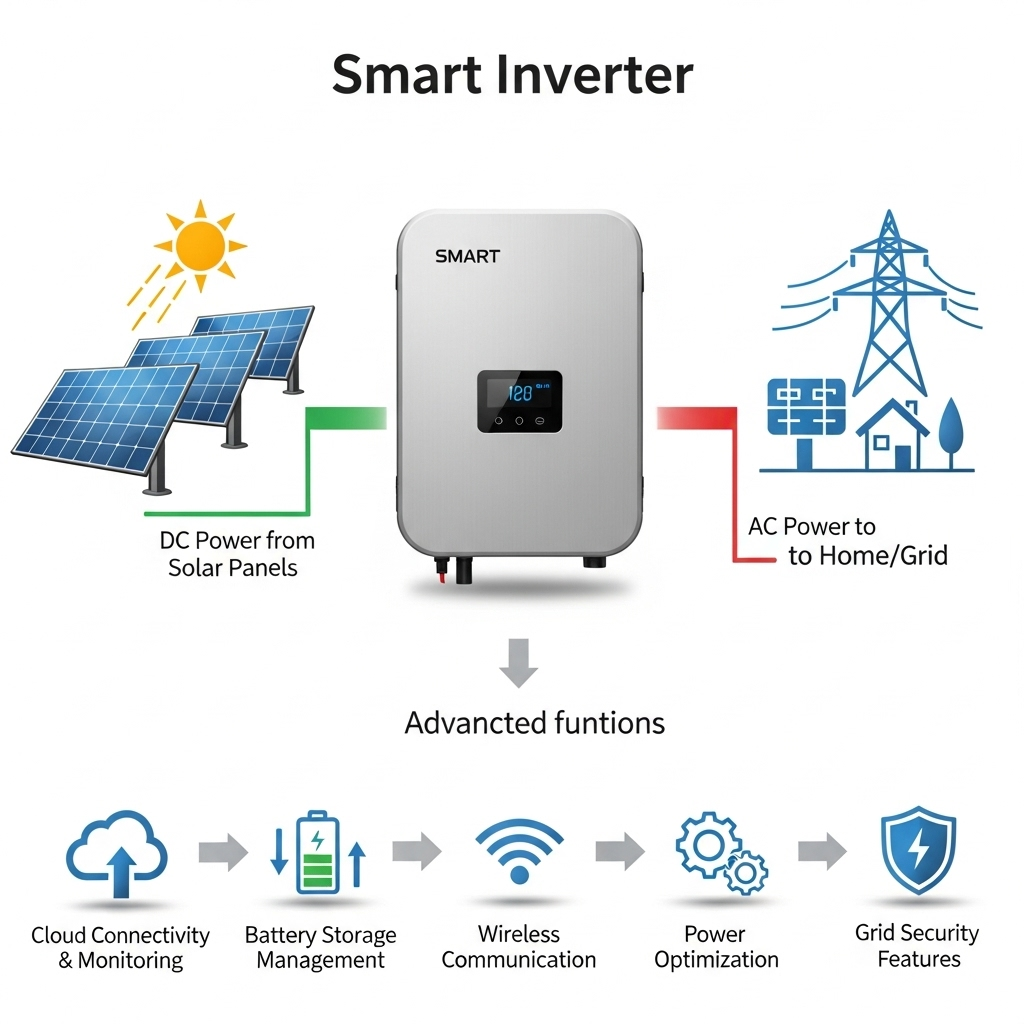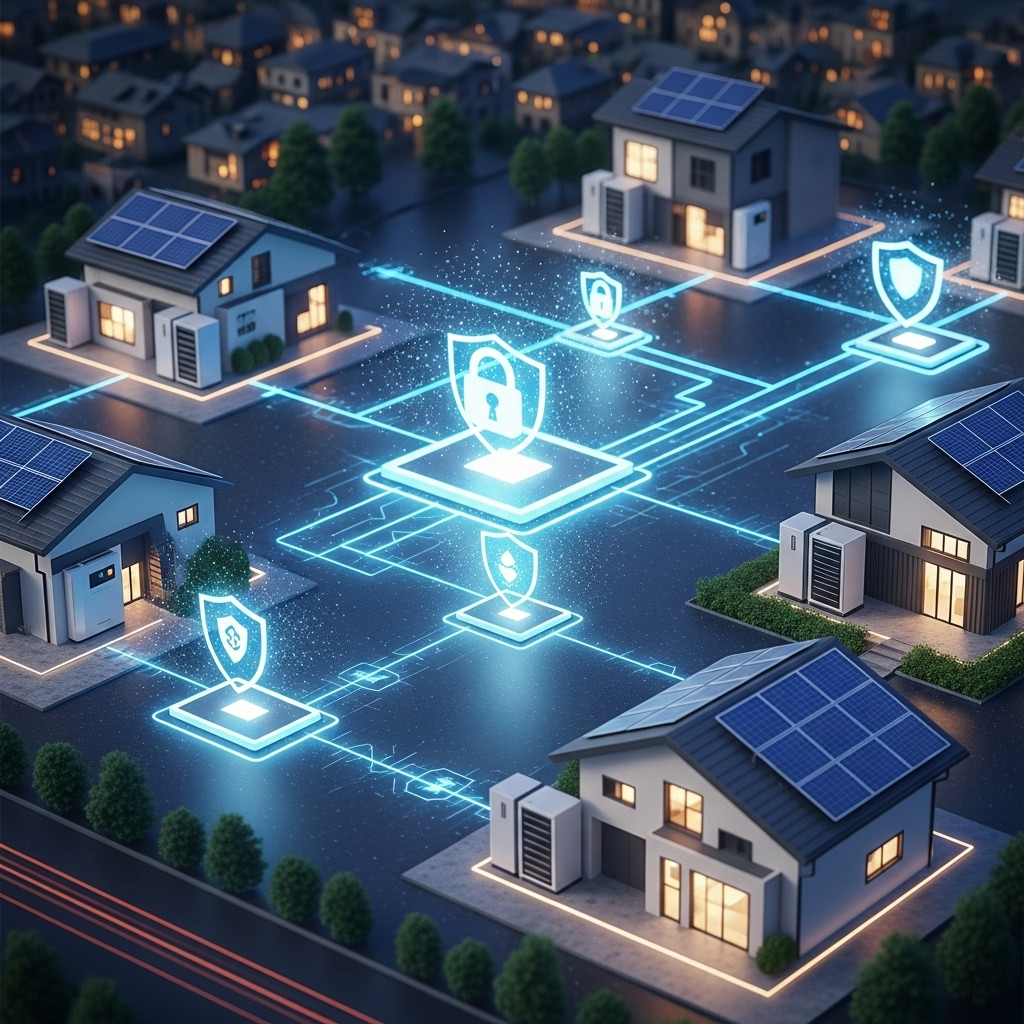Adding a solar photovoltaic and energy storage system (PV-ESS) to your home is a significant step toward energy independence. It allows you to generate your own clean power and store it for when you need it most. But before you can power your home, your system must first connect to the public power grid. This connection is governed by a set of technical rules known as grid codes. Navigating these regulations is a critical part of any successful residential solar battery storage grid integration.
This blueprint provides clear, practical steps for homeowners to understand and meet grid code compliance. Following these guidelines helps ensure a smooth, timely, and safe connection for your PV-ESS.
Understanding the Grid Code Landscape
Grid codes are the foundation of a stable and reliable electricity supply. They are the technical rulebooks that all power generators, including your home's PV-ESS, must follow to connect to the grid. Failing to comply can lead to significant delays, extra costs, or even a refusal to connect your system.
What Are Grid Codes?
Think of grid codes as the traffic laws for the electricity highway. They dictate how power systems must behave to prevent 'traffic jams' (instability) or 'accidents' (blackouts). According to a report on Grid Codes for Renewable Powered Systems by the International Renewable Energy Agency (IRENA), these codes specify the minimum technical requirements that power plants need to meet for grid access. Their purpose is to ensure the safety and stability of the entire power system as more renewable sources like solar are added.
Why They Matter for Your PV-ESS
Your residential PV-ESS is not a passive appliance; it's an active participant in the power grid. It generates electricity and can send it back to the grid. Grid codes ensure your system does this in a way that helps, rather than harms, grid stability. Inappropriately designed connection requirements can increase the risk of supply interruptions or prevent the system from reaching its full potential.
The Patchwork of Regulations
Grid code compliance isn't a one-size-fits-all process. The rules can vary dramatically between countries, states, and even local utility providers. In the United States alone, there are over 18,000 local jurisdictions, many with their own unique permitting requirements. As highlighted in a U.S. Department of Energy success story, these fragmented rules can complicate the process of going solar. This makes it vital to identify the specific rules that apply to your property early in the planning stage.
Core Technical Requirements for PV-ESS Grid Connection
While specific rules vary, most grid codes for residential PV-ESS focus on a few core technical capabilities. These are primarily managed by the system's hybrid inverter, which acts as the brain of the operation, controlling the flow of energy between your solar panels, battery, home, and the grid.
Voltage and Frequency Regulation
The grid operates at a stable voltage and frequency (e.g., 120V/240V at 60 Hz in North America). Deviations can damage appliances and destabilize the grid. Modern PV-ESS inverters are required to have 'grid support' functions. They must be able to 'ride through' minor voltage or frequency dips without disconnecting, a feature known as Low Voltage Ride Through (LVRT). They may also need to automatically reduce power output if the grid's frequency becomes too high, helping to restore balance.
Active and Reactive Power Control
Your system produces active power, which is the energy that runs your lights and appliances. However, grids also need reactive power to maintain proper voltage levels. Many grid codes now require residential inverters to manage reactive power, providing it to the grid when needed to support voltage stability. This makes your home's system a helpful partner to the utility, not just a power consumer.
Safety and Anti-Ilanding Protection
This is one of the most critical safety requirements. 'Islanding' occurs if your solar system continues to send power to the grid during a blackout. This creates a dangerous 'island' of energized wires that could harm utility workers trying to make repairs. All certified inverters have anti-islanding protection, which automatically shuts the system down within milliseconds of detecting a grid outage. This feature is non-negotiable for a grid-tied system.
Navigating the Interconnection and Net Metering Process
Getting approval to connect your system involves a formal application process with your utility. This is where your blueprint for compliance becomes a practical checklist.
The Interconnection Application
The first step is submitting an interconnection application. This typically requires detailed information about your system, including:
- Specifications for your solar panels, inverter, and battery.
- A single-line diagram (a simplified electrical schematic of your system).
- Proof of certified equipment (e.g., UL 1741 listing for the inverter).
Accuracy and completeness are key. Errors or missing information are common sources of delay. Recent efforts, detailed in a report on improving interconnection, aim to streamline these processes by updating state rules to better accommodate energy storage, which can reduce costs and time for homeowners.
Net Metering Rules and Their Impact on ESS
Net metering allows you to earn credits for any excess solar power you send to the grid. However, the addition of a battery complicates this. Some older net metering rules were not written with energy storage in mind. They may not account for the ability to store solar energy and export it later. To address this, some regions are adopting new rules that allow homeowners to declare an 'operating schedule' for their battery, giving the utility clear expectations of when the system will export power.
The Role of Certified Equipment
Using equipment that is certified to meet industry standards like IEEE 1547 and UL 1741 is crucial. These certifications prove that the equipment has been rigorously tested for safety and performance. Utilities are far more likely to approve applications with certified components quickly, as it gives them confidence that the system will not compromise grid safety.
Optimizing Your System for Compliance and Performance
A well-designed system not only meets grid code requirements but also maximizes your return on investment. This involves selecting the right components and configuring them correctly.
Choosing the Right Inverter and Battery
The hybrid inverter is the heart of your PV-ESS. You must choose a model that is pre-certified for your region's grid codes. Your installer can help you identify compliant models. For the battery, performance is key. Important metrics include its cycle life (how many times it can charge and discharge) and Depth of Discharge (DoD), which indicates how much of its total capacity you can use. For a deeper look at evaluating these factors, you can review key metrics in this ultimate reference on solar storage performance.
System Sizing and Operating Modes
The size of your solar array (in kilowatts) and battery (in kilowatt-hours) will be reviewed by the utility. Larger systems may require a more detailed impact study. You can also configure your system to operate in different modes to align with your goals and local utility rules.
| Operating Mode | Primary Goal | Grid Interaction | Typical Use Case |
|---|---|---|---|
| Self-Consumption | Maximize use of solar energy on-site | Minimize export to the grid | Areas with low net metering compensation |
| Time-of-Use (TOU) | Reduce electricity bills by avoiding peak rates | Charge battery during off-peak, discharge during peak | Regions with TOU electricity pricing |
| Backup Power | Ensure power during grid outages | Primarily interacts with the grid for charging | Homeowners in areas with frequent power outages |
Your Path to a Smooth Grid Connection
Achieving grid code compliance for your residential PV-ESS is a manageable process when you are well-prepared. The key is to understand your local requirements, work with qualified professionals, and use certified, high-quality equipment. A compliant system is more than just a power source for your home; it is a smart, safe, and valuable asset that contributes to a more resilient and modern energy grid.
Disclaimer: This information is for educational purposes only and does not constitute legal or financial advice. Always consult with a qualified solar installer and your local utility to understand the specific grid connection requirements in your area.
Frequently Asked Questions
What happens if my PV-ESS is not grid code compliant?
If your system does not meet local grid codes, your utility will likely deny your interconnection application. You would then need to make potentially costly modifications to your system to meet the requirements before you can be approved to connect to the grid.
Do I need a special meter for a solar and battery system?
Yes, in most cases, your utility will install a bi-directional meter. This meter can measure both the electricity you draw from the grid and the excess electricity your system sends back to the grid, which is necessary for net metering and billing.
Can I go completely off-grid with my system?
While it is technically possible to go off-grid with a sufficiently large solar and battery system, it requires careful planning and significant investment to ensure you have enough power for all conditions. Grid-tied systems offer the reliability of grid power as a backup, making them a more practical choice for most homeowners.
How do I find the specific grid codes for my area?
The best way is to contact your local electric utility directly. They will have a department that handles distributed generation or interconnection, and they can provide you with the official technical requirements and application documents. A qualified local solar installer will also be an expert on these local rules.





Leave a comment
All comments are moderated before being published.
This site is protected by hCaptcha and the hCaptcha Privacy Policy and Terms of Service apply.